Place to go, Things to do near Songdo ConvensiA
Place to go, Things to do near Songdo ConvensiA
1. Central Park
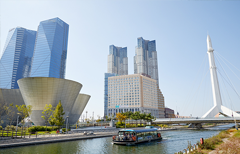
Korea’s first seawater park. The park is a rest area inside the city, next to ConvensiA with five-theme gardens.
You can enjoy the park with water-taxi tour, canoeing, kayaking, and bicycling.
160 Convensia-daero
(16mins-walk from the conference venue)
- East boathouse
- Hours: 10:00 am ~ 18:00 pm (hours can be change depends on weather conditions)
- Fees: Canoe - KRW 25,000, Family Boat – KRW 35,000 - Bicycle: bicycle – KRW 10,000/hour,
tandem(bicycle for 2 people) – KRW 15,000/hour - West boathouse (Water-taxi tour)
- Hours: 10:00 am ~ 19:00 pm (hours can be change depends on weather conditions) * departures at every on time
- Fees: KRW 4,000 (round-trip, approximate 20mins.)
2. Songdo Hanok Village (Inside of the Central Park)
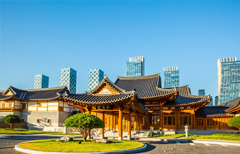
Complex with restaurant and café, you can enjoy in traditional Korean atmosphere. You can walk along the complex surrounded by Hanok.
Location180, Technopark-ro
(15mins-walk from the conference venue)
3. Daryewon
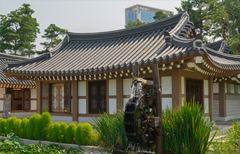
Cultural and artistic park with sculptures of the Twelve Zodiac animal deities and a pond. You can also experience traditional Korean tea ceremony, tea etiquette, and Hanbok in Daryewon.
Location59, Haesong-ro
(17mins-walk from the conference venue)
- Daryewon Program
- Reservation needed (until 1day before of program date)
- Program times: (1) 11:00 am ~ 12:00 pm
(2) 15:00 pm ~ 16:00 pm
- Program fees: KRW 5,000 / person
4. Haedoji Park
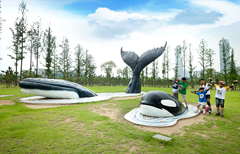
Haedoji means sunrise in Korean language. It is modern and symbolic park of Songdo with Music Fountain Plaza, ground fountain, sunflower garden, rose garden and Dream of a Whale(sculpture of whale).
Location51, Haedoji-ro
(17mins-walk from the conference venue)
5. Tri-bowl
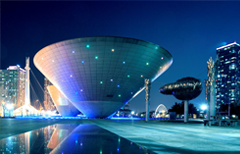
Futuristic style of architecture called ‘tri-bowl’ as they look like three bowls put together. Each bowl stands for ‘sky(airport)’, ‘ocean(port)’, and ‘land(metro transport)’. It is a venue for people to watch performances, art exhibitions, and related activities. You can enjoy the architectural design during the day-time and also in the evening with lights glow.
Location250, Incheon tower-daero
(25mins-walk from the conference venue)
6. Incheon Urban History Museum

Incheon was the first city to implement urban development plans in Korea. You can find information on Incheon’s urban development plans from past, present to future all in one place.
Location238, Incheontower-daero, 160beon-gil
(24mins-walk from the conference venue)
- Opening hours: 9:00 am ~ 18:00 pm (last entrance 17:30 pm)
- Holidays: Every Monday
- Admission fees: Free
7. G-Tower Observatory
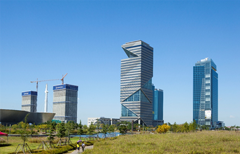
A landmark of Songdo, home of Incheon Free Economic Zone Authority, Green Climate Fund(GCF), United Nations agencies. The ‘G’ stands for ‘Green, growth and global’. The building is also an eco-friendly facility that is self-sufficient for 17.8 percent of its energy use.
Location33F, 175 Artcenter-daero
(28mins-walk from the conference venue)
- Opening hours: 9:00 am ~ 18:00 pm on weekdays
- Admission fees: Free
8. Hyundai Premium Outlet Songdo

The Largest outlet is Songdo with garden terrace with all day dining & pub, cafeteria, and various restaurants.
Location123, Songdogukje-daero
(27mins-walk, 1.6km)
- Opening hours: 10:30 am ~ 21:00 pm
9. Triple Street

Multicultural complex and a playground to enjoy with retail stores(clothing, cosmetics, etc.), restaurants and pubs.
Location33-3, Songdogwahak-ro 16beon-gil
(30mins-walk from the conference venue)
- Opening hours: 10:30 am ~ 22:00 pm
10. Lotte Mart & Himart

A one-stop shop with mega discount store, home appliance store, food courts, and convenient facilities.
Location177, Convensia-daero
(7mins-walk, 504m)
- Opening hours: 10:00 am ~ 23:00 pm (* 9/25(sun) closed)
11. NC Cube Canal Walk
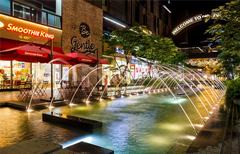
You can walk along the canal that run between the buildings and enjoy shopping and relaxing with artistic sculptures.
Location87, Artcenter-daero
(27mins-walk from the conference venue)
- Opening hours: 10:30 am ~ 22:00 pm
12. Chinatown
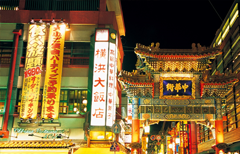
First Chinatown formed in 1884. You can enjoy Chinese food and street art of the story of the three kingdoms (Samgukji and Chohanji). Also there is Jajangmyeon Museum where you can see the history of jajangmyeon (noodles in black bean sauce).
Location12-17, Chinatown-ro, 26beon-gil
- Jajangmyeon Museum
- Location: 56-14, Chinatown-ro, Jung-gu, Incheon
- Opening hours: 9:00 am~6:00 pm
- Fee: KRW 1,000
13. Songwol-dong Donghwa(fairytale) village
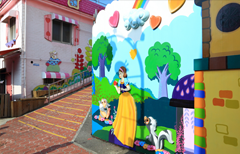
Songwol-dong Donghwa village is next to Chinatown. The village has colorful walls inspired by classic fairy tales from the world. Every wall and alley are photozone.
Location38, Donghwamaeul-gil
14. Wolmi Bada(sea) train
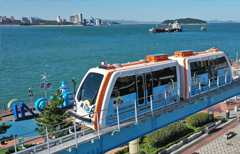
It is the longest urban tourist monorail in Korea that circles around Wolmido. It travels a total distance of 6.1km at 10km/hr. It takes approximately 35 minutes to circle around Wolmido. You can view the natural landscape of Wolmido, Incheon inner harbor, the West Sea and all the way to Incheondaegyo.
Location(Wolmi Sea Station) 269, Jemulyang-ro
- Opening hours:
(Tue~Thur) 10:00 am ~ 18:00 pm
(Fri~Sun) 10:00 am ~ 21:00 pm - Holidays: Monday
- Fares: KRW 8,000
(May re-ride twice the date of your purchase, total 3 rides in total)
15. Ganghwa Old Town Story Walk

Following the Ganghwa Old Town Story Walk is a comprehensive lesson on the island’s history, industry, and religion. It was selected for the 2021-2022 “100 Must Visit Tourist Spot”.
About 2 hours are needed to visit the sites and listen to the stories
in this 2.6 km–long walking tour starting from the Simdo Textile factory site to Ganghwa Anglican Church, a church built in a Hanok; Joyang Bangjik, a former textile factory turned into a café; and Sochang Experience Hall, a place to experience the history of the island’s textile industries.
San 3, Gukhwa-ri, Ganghwa-gun


























